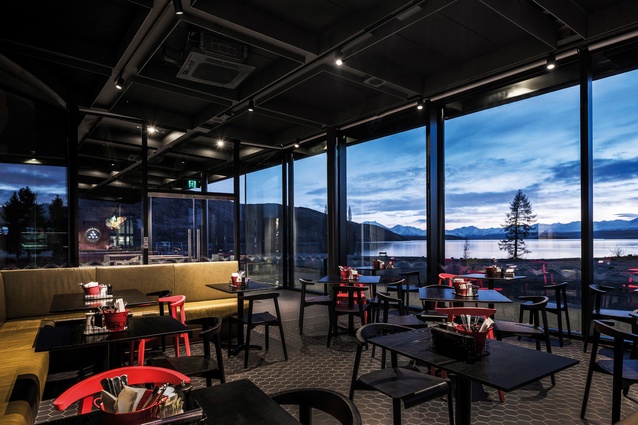Intergalactic: Inside the Dark Sky Project
The South Island’s seemingly endless night sky, Māori and European stargazing traditions, a nearly forgotten Victorian telescope… as far as inspiring narratives for an interior space go, the designers of the Dark Sky Project were spoilt for choice.
In 2012, a parcel of more than 4300km2 of land in the South Island’s Aoraki Mackenzie Basin was awarded ‘International Dark Sky Reserve’ status by the International Dark-Sky Association. Such a designation – one of about a dozen around the world – recognises the region’s importance for astronomy, as its location and low levels of light pollution allow professional and casual stargazers unparalleled views of the night sky. This status also seeks to preserve this slice of darkness for posterity by limiting light emissions in the area and educating people on the importance of dark skies and astronomy, and on the multitude of narratives that they have and continue to inspire.
Within this expanse, enviably atop Mount John, sits the Mount John Observatory: a University of Canterbury (UC)-run research complex with various telescopes and some significant discoveries under its orbital belt. Since its inception in 1965, the observatory has held an aura of romantic magnetism, attracting a significant portion of the millions of tourists who come to Lake Tekapō (a mere 10km away) or are on their way to Mount Cook or further south to Queenstown.

A few years back, a group that included UC and Ngāi Tahu, among others, decided to build new tourist facilities at the foot of Mount John. The move sought to give visitors heading to the observatory a base camp and, at the same time, to serve as a destination and education centre for daytime visitors.
Parallel to this mission was an attempt to restore and rehouse the Brashear Telescope, a nine-metre instrument from the 1890s that had been gifted to UC by a United States university. Both goals were combined and Sheppard & Rout Architects was brought along to complete a 1173m2 base build, with an 11-metre dome for the Brashear at its heart.
Auckland’s ThoughtFull Design – which has a history of working with Ngāi Tahu on similar tourism projects (Rainbow Springs, Franz Josef Glacier) – was also brought on board to “develop a brand, a name, a visual identity… and then a story. That story,” according to the firm’s founding partner, Geoff Suvalko, “started to manifest itself inside the building.”
One of the starting points was a desire to juxtapose Māori and European astrological knowledge and traditions through exhibition content and wayfinding.

“That kind of fusion of Māori culture and science went into our design process, where we designed a story – told through guides – through three different spaces within that experience zone,” says Suvalko, “from creation to identification, to the theory around science, to the application of star law to Māori life and so on.”
Those exhibition spaces were inspired, in part, by Māori architectural history and, more specifically, the Whare Tātai, which designers describe as an open-roofed building that was often built just slightly outside of the village. It was here that people of mana would pass on their knowledge about the galaxy. “It was a building where Māori used to teach identification, the relevance of stars in the night sky to the seasons of the year and their activities, such as the running of the eels. In this building, we have tried to bring that to life,” says Suvalko.

The ways in which Whare Tātai was translated into the interior included not just the exhibition content but how it was presented: via human guides rather than digital or self-guided tours. Within the Whare Tātai “you would move around from right to left. Basically, the individual who had the knowledge would sit at the centre and then the students would move around four different walls,” says Suvalko. “The first wall was used to describe creation – how the world came about.
The second showed where constellations are and what they are called, and students would learn these through repetitive chanting. Then, the relevance [and significance] of those constellations – where in the night sky they were, what time of year, at what height, how bright.
“We have designed the space to reflect a Whare as opposed to making it look like one literally, and that shift, I think, creates a really exciting space,” says Suvalko. “It was a way of expressing our cultural constructs in a contemporary way, and this makes people think differently about them. It reframes them because the constructs that Māori had are timeless; they just haven’t necessarily been shared. So, we had to make the knowledge accessible to everyone. It had to feel relevant, contemporary and exciting.”
The interior colour and material schemes were also crucial for two separate reasons. First, they had to be faithful to that Māori narrative and use colours of significance: hence, red, white and black.
Second, as part of the area’s International Dark Sky Reserve status, the building had to adhere to fairly strict light emission ordinances and ensure that internal light spillage was kept to an absolute minimum.
According to ThoughtFull design lead Aaron Richardson, these low light levels meant they could “play a lot more with materiality to express things we would normally do through colour”.

Core finishes were chosen for their somewhat science-alluding geometrical shapes and their levels of reflectiveness: hexagonal floor tiling, low-sheen acrylic paints, marmoleum floors with a faux concrete shine, and bathroom mosaic walls with backlit round mirrors, which emulate eclipses.
Beside the exhibition spaces is an American-inspired diner, which aims to make the most of the daytime views while also providing a rest area for night-time visitors. This space makes use of some impressive light elements, such as neon accents and colourful, glass orb pendants (a mixture of opal and translucent glass) made by artist Luke Jacomb.
“The idea behind the circular forms [was to] echo the celestial bodies, both through the identity itself and through some of the detail,” says Richardson.
The Dark Sky Project is an exciting and intriguing proposition. It is an interior born from considerable stakeholder management, an understanding of bicultural narratives and the blending of those, tactfully and intelligently, into a truly contemporary space.
This article first appeared in Interior magazine.


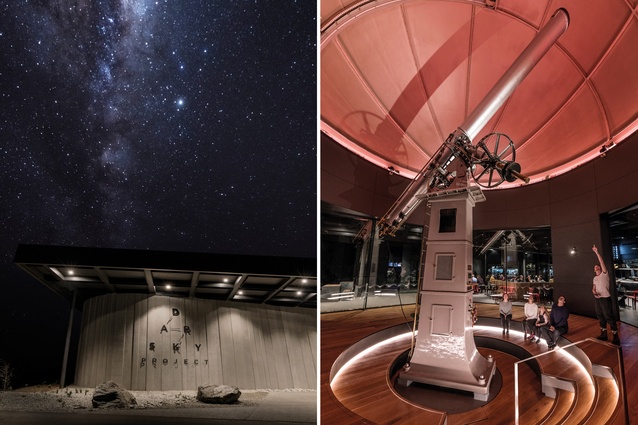



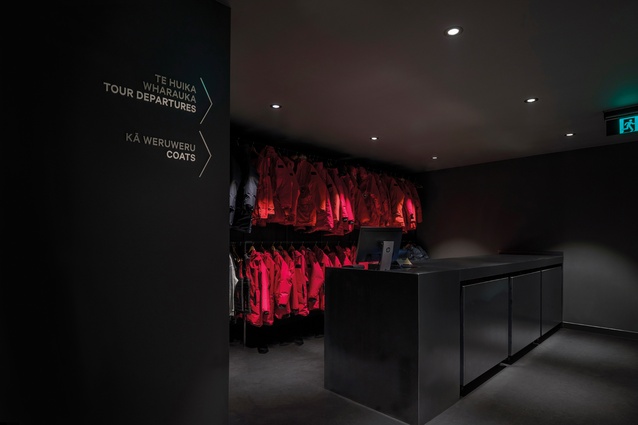
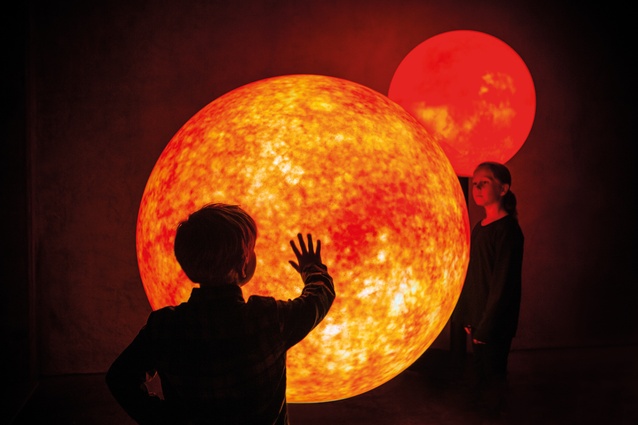
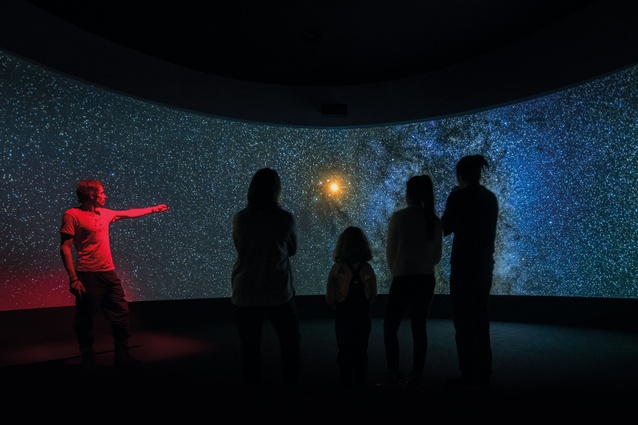

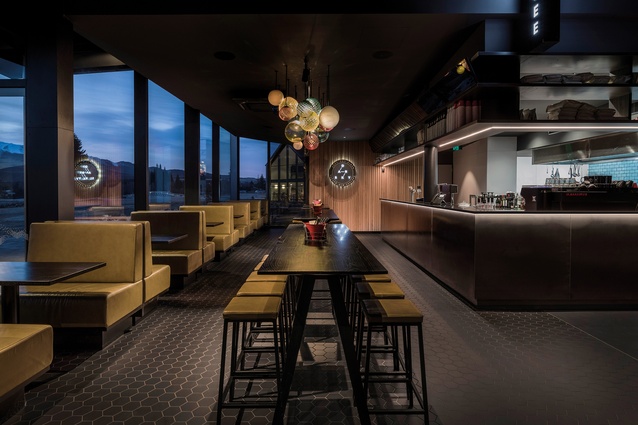

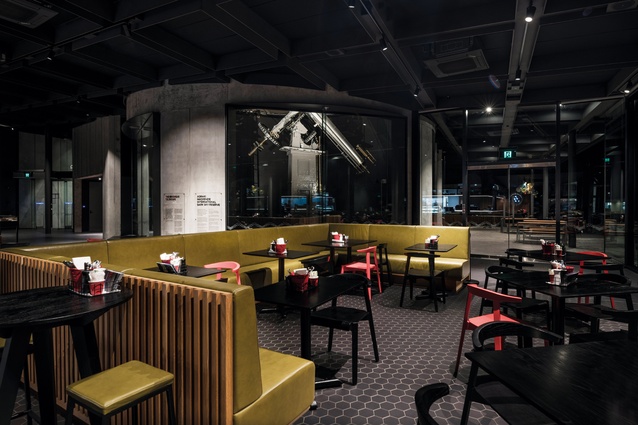

!["“The idea behind the circular forms [was to] echo the celestial bodies," says designer Aaron Richardson; bathroom mosaic walls with backlit round mirrors emulate eclipses.](https://cdn.architecturenow.co.nz/site_media/media/cache/f2/c7/f2c7a55abf22efa35277cc1e4a8ff688.jpg)
